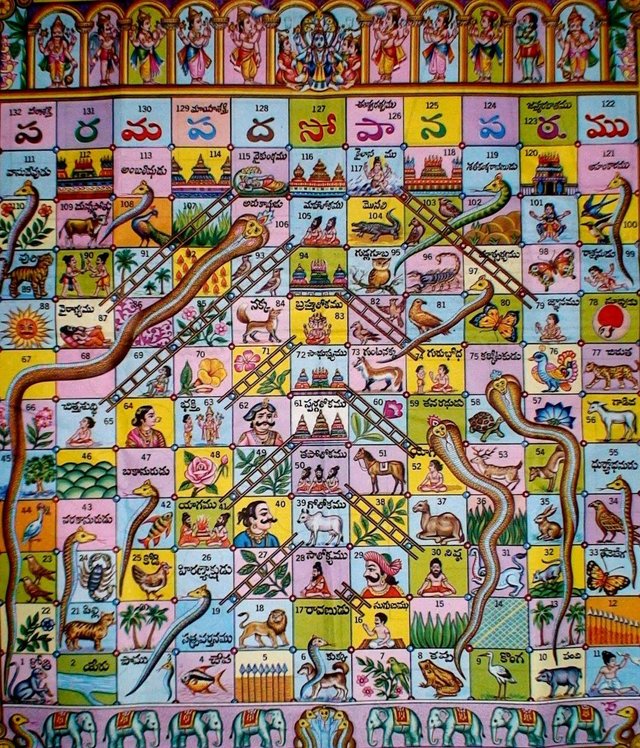The 13th century poet saint Gyandev created a children's game called Moksha Patam. The British later named it Snakes and Ladders instead of the original Moksha Patam.
In the original one hundred square game board: the 12th square was faith,
the 51st square was reliability,
the 57th square was generosity,
the 76th square was knowledge,
and the 78th square was asceticism.
These were the squares where the ladders were found and one could move ahead faster.
The 41st square was for disobedience,
the 44th square for arrogance,
the 49th square for vulgarity,
the 52nd square for theft, the 58th square for lying, the 62nd square for drunkenness,
the 69th square for debt, the 84th square for anger, the 92nd square for greed,
the 95th square for pride, the 73rd square for murder and the
99th square for lust.
These were the squares where the snake waited with its mouth open.
The 100th square represented Nirvana or Moksha.
The tops of each ladder depict a God, or one of the various heavens (kailasa, vaikuntha, brahmaloka) and so on.
As the game progressed various actions were supposed to take you up and down the board as in life.

Authors get paid when people like you upvote their post.
If you enjoyed what you read here, create your account today and start earning FREE STEEM!
If you enjoyed what you read here, create your account today and start earning FREE STEEM!
Hi! I am a robot. I just upvoted you! I found similar content that readers might be interested in:
http://theanalyst.co.in/2018/05/17/who-invented-snakes-and-ladders-or-moksha-patam/
Downvoting a post can decrease pending rewards and make it less visible. Common reasons:
Submit
nice post lets follow and upvote each other ,make mgsc community big
Downvoting a post can decrease pending rewards and make it less visible. Common reasons:
Submit